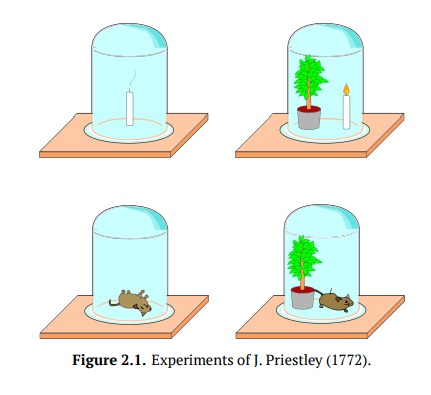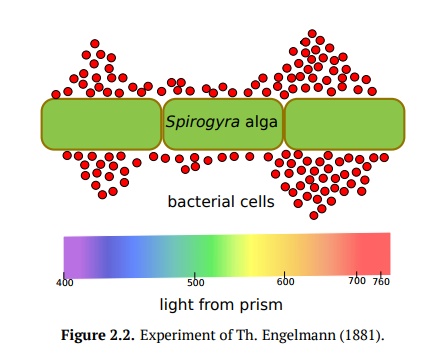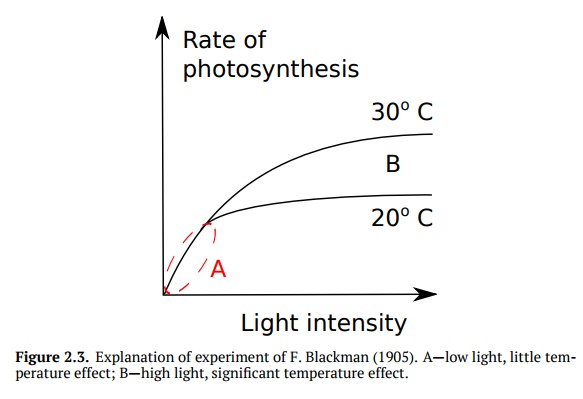Chapter: Introduction to Botany: Photosynthesis
Discovery of Photosynthesis

Discovery of Photosynthesis
The history of the studies done on photosynthesis dates back into the 17th century with Jan Baptist van Helmont. He rejected the ancient idea that plants take most of their biomass from the soil. For the proof, he performed willow tree experiment. He started with a willow tree of 2.27 kg. Over 5 years, it grew to 67.7 kg. However, the weight of the soil only decreased by 57 grams. Van Helmont came to the conclusion that plants must take most of their weight from water. He did not know about gases.
Joseph Priestley ran a series of experiments in 1772 (Fig. 2.1). He tested a mouse, a candle, and a sprig of mint under hermetically sealed (no air can go in or out) jar. He first observed that a mouse and a candle behave very similarly when covered, in that they both “spend” the air. However, when a plant is placed with either the candle or mouse, the plant “revives” the air for both.

Further ideas were brought about in the late 1700’s. Jan Ingenhousz and Jean Senebier found that the air is only reviving in the day time and that CO2 is as-sembled by plants. Antoin-Laurent Lavoiser found that “revived air” is a separate gas, oxygen. One century later, Thomas Engelmann ran an experiment (Fig. 2.2) using a crystal prism. He found that Spirogyra algae produce oxygen mostly in the blue and red parts of the spectrum. This was a huge find. It tells that the key photosynthetic pigment should accept blue and red rays, and thus reflect green rays. Blue-green chlorophyll best fits this description.

Another important fact was discovered by Frederick Blackman in 1905. He found that if light intensity is low, the increase of temperature actually has very little effect on the rate of photosynthesis (Fig. 2.3). It could not happen if light and temperature were independent factors. If temperature and light were compo-nents of the chain, light was first (“ignition”) and temperature was second. This ultimately shows that photosynthesis has two stages. The first is a light stage. This stage relates to the intensity of the light. The second stage is the enzymatic (light-independent) stage which relates more with the temperature. Light reac-tions depend on the amount of light and water; they produce oxygen and energy in the form of ATP. Enzymatic reactions depend on carbon dioxide and water; they take energy from the light reactions and produce carbohydrates. Some-times, enzymatic stage is called “dark” but it is not correct because in darkness, plant will run out of light-stage ATP almost immediately. Only some C4-related processes (see below) could run at night.

Since water molecules are spent on light stage to make oxygen and at the same time are accumulating (see below), one of the best “equations” describing pho-tosynthesis as a whole is
CO2 + H2O + light - > carbohydrates + H2O + O2
Related Topics